#animal rehabilitation
Text
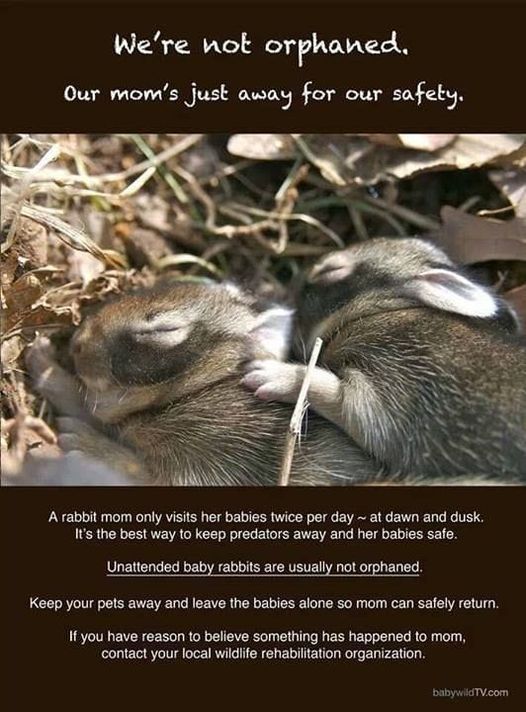
#rabbit#lagomorph#mammal#animals#nature#wildlife rehab#animal rehabilitation#animal welfare#science#wildlife biology
171 notes
·
View notes
Text
A success story ✨
#pay attention#educate yourself#educate yourselves#knowledge is power#reeducate yourself#reeducate yourselves#think for yourself#think for yourselves#think about it#wildlife rehab#animal rehabilitation#success story
67 notes
·
View notes
Text

Meet Zuri, my latest foster-hedgehog. He's still on worming meds but we'll have him fixed up and released as soon as possible 💚🦔🌳🌱💚
2 notes
·
View notes
Text
A tiny bird got stuck in our tent and exhausted themselves trying to get out.
They were so small and tired, and when I reached out to free them, they climbed against my chest and fell fast asleep.
To be trusted by something so fragile, to see something so small wanting for nothing more than safety and warmth and to be able to give it that
moments like this remind me why I fight to live
why a bleeding heart can still pump strong
Our purpose is to try our best to personify compassion.

8 notes
·
View notes
Note
I'm not licensed and even I know that if you raise a wild animal around humans and don't teach them anything about being afraid and defending themselves that they're going to die if you release them into the wild
As painful as it sounds, a lot of people DON'T know that. They really think that nature will outweigh nurture. It.... doesn't.
Animals (humans, cats, dogs, birds, etc.) have an inherent desire to get the most out of the least amount of work. Where I live, so many people are "Homesteading" (aka, trying to raise chickens and produce in suburbia) that Cooper's Hawks are a MAJOR issue because they're overpopulated, inbred, and no longer migrating due to an abundance of food (livestock birds including chickens, turkeys, pigeons, and even the wild birds who try to nab some food).
They are no longer competing with a small food supply, so they don't see a reason to leave (migrate/kick out their kids).
Animals DO NOT WANT TO WORK for their food. It's part of the reason why rehabbing Corvidae and Raptors is so hard and they often CAN'T be released and either go to a sanctuary, zoo, or education center.
That isn't even taking into account the animals that just.... come out wrong.
My mom and I have at least five right now that can never be released; and Eastern Cotton Tail with no fear of humans (Pug; runs up to us demanding food), a Red Squirrel (Jalapeno; literally followed a child into her house and let himself be picked up), and Albino Grey Squirrel (Snowflake; Albinos can't survive in the wild due to their condition), an opossum suffering from metabolic bone disease (Charleston; another rehabber who didn't know what they were doing), and a red fox (Nibblet; She was abandoned by mom and decided she liked humans now).
Pug, Jalapeno, Snowflake, and Charleston will stay with us; we have enough room and supplies to care for those four.
Nibblet is going to a center; where she will live with an older, blind red fox. We tried so hard to get Nibblet to stop being so friendly to people. We put two other fox pups in with her, we stopped interacting with her (excluding food and water). And yet, she still wants to come into our house. Not really to cuddle, but to play/just be in the area she perceives as "home".
That person is raising this fox to see people, cars, dogs, etc. as safe and okay to interact with. They're not. People will see that fox as having rabies and call the police/animal control.
That fox's life is going to be cut short and full of pain and suffering because of one person who can't let go of their ego.
#baka monarch#ask#Animals#animal rehabilitation#stupid people#Sorry this is so long#Also what is this new tagging way#I hate it
10 notes
·
View notes
Text


Here’s my personal recommendations of YouTube channel’s to check out:
#animalblr#animal lover#animal lovers#animal rehabilitation#animal rescue#animal videos#animal video#tumblr recommendations#recommend#recommendation#youtube#youtube recommendations#youtube content#youtube link#youtube links#urban rescue ranch#youtube channel recommendation#support youtube creators#youtube video#animal rehab#based af#texas#waco texas#support workers#relatablepost#relatable af#very relatable#youtube shorts#animals#non profit
4 notes
·
View notes
Text
From Yakusinchi Wild,
by Jane Sloan: “This loved-up pair of Aratinga erythrogenys parrots were released into the wild in April 2016 along with another 5 individuals. We always hear them in the distance in the forest but last week this pair decided to pay a visit to the YakusinchiWILD aviaries!! it was amazing to see them close to, fat and shiny-feathered and so happy!! They are so in love with each other and spend a lot of time kissing beaks and cuddling along with grooming each other and playing with each other's feet. To see this healthy and happy pair after many many months certainly makes all the hard work worthwhile!!”




💖💖💖🦜
16 notes
·
View notes
Text
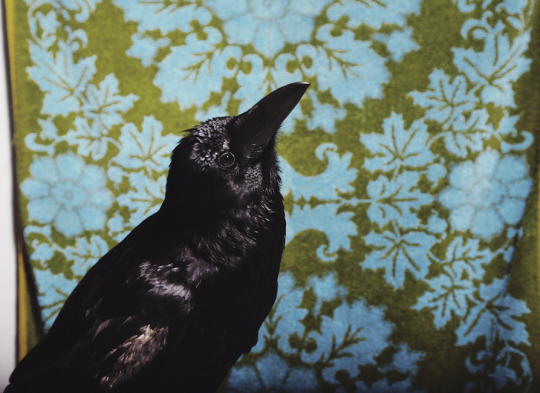
Annie Marie Musselman
4 notes
·
View notes
Text
Why am I here?
Well after experiencing a very colourful career and being published in veterinary journals, I wanted to impact more outside the echo chamber and the readers of such publications, who I feel are too scared to seriously change, act or be honest with themselves.
I have a lot to say regarding important topics of animal care, welfare laws, the issue of flat faced dogs, the keeping of wild animals as pets, the animal harming industries (farming, labs, hunting etc) and post rescue care for victims of such industries.
Follow for more coming and see what unique set of thoughts that I bring to such an important social justice issue.

#vegan#animals#pets#animal rescue#social justice#fypツ#climate emergency#nature#speciesism#animalrights#animal rehabilitation
6 notes
·
View notes
Note
Speaking of animals what ever happen to those oppossums?
(ooc)
So IRL I rescued 6 baby oppossums.
ATM they are with a rehabilitator, and they are growing strong!
Hopefully in a month or two they will be ready to be released.
the group was 3 boys and 3 girls, and they were all super healthy and great!

10 notes
·
View notes
Text
FAIR WARNING THAT THESE ARE GRAPHIC SURGICAL IMAGES AND YOU MAY NOT WANT TO WATCH. IT INVOLVES A CHICKEN THAT IS LIGHTLY SEDATED SO SHE DOES MOVE A LITTLE. SHE DID HAVE A LOCAL ANESTHETIC AND SHOULD NOT HAVE BEEN IN MUCH PAIN IF ANY.
My Mom contacted the closest farm vet to us. She said she didn’t have any experience with chickens, but if it was truly an impacted crop then she might be able to perform the surgery necessary to fix it. We said that would be fine; if there’s a chance of saving her we might as well try.
Below is a video of the surgery (done on the dining room table and you can see my parrot, Bean, making a cameo) and a photo of everything taken out of her. She was eating her bedding as I recently switched over from sawdust to straw, thinking they might like it better. 🙄 Looks like I’m back to sawdust. This was a nightmare and I’m so so sorry to Patti for not catching it sooner.
My mom took this video because I was busy holding the surgical light lol!
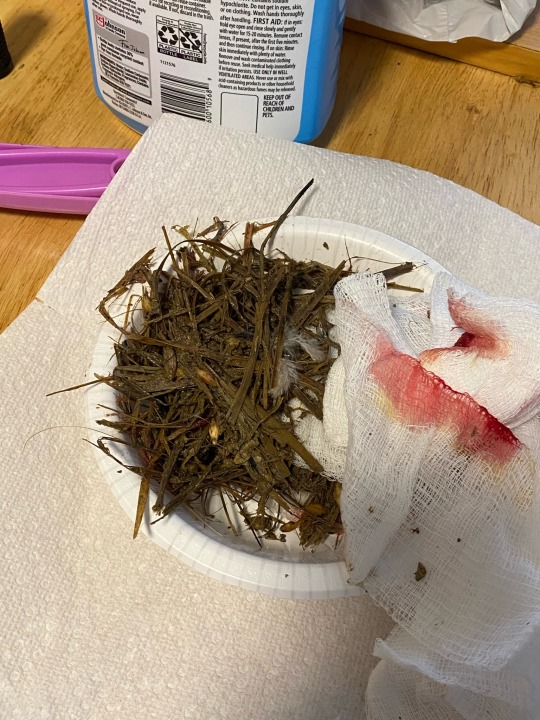
I can’t believe this all fit inside one chicken. Insanity.
Patti is currently doing very well! She’s standing on her own and has been eating and drinking. She receives small doses of amoxicillin 3 times a day, we have a Honey Silver spray to put on the wound to prevent her from chewing at the stitches while also helping prevent infection, and we are feeding her a mash of their usual crumble pellets mixed with sugar and some soldier worms for energy. She also has access to one water that has an aspirin solution (325mg per gallon) and another that has Poultry Cel, which is a high vitamin content solution that should bring her back to her usual self in no time!
#journal entry#chickens#chicken surgery#animal surgery#tw: blood#tw: animal illness#tw: animal surgery#animal rehabilitation#animal rescue
2 notes
·
View notes
Text
I think the worst thing about Amos convincing Widow Tweed to let Tod go is the fact that it’s a miracle Tod survived even one night in the wild.
When you raise an animal from birth like Widow Tweed did with Tod, they aren’t able to properly hunt/fend for themselves when they’re released into the wild. In fact, generally if an animal rescue takes in an orphaned animal, they’ll keep the animal at the rescue or in a sanctuary because the animal wouldn’t be able to survive in the wild.
Cougar cubs, fox cubs, lynx kittens, wolf pups, bird chicks, they’re all taught by their mothers (or in some cases, both parents) how to survive in the wild. Humans can’t properly teach an animal how to survive in the wild, so if an animal is raised by humans from the time they’re a baby, they won’t survive in the wild.
Animals have to be raised in the wild to survive in the wild. Being raised in the wild and being raised in captivity are completely different, and without another animal of the same species to teach them how to survive in the wild, they won’t survive in the wild. You also have the additional problem of animals raised by humans won’t be afraid of humans, and that makes it more likely that they’ll be shot and killed by hunters, or worse, poachers. It’s why I’m so heavily against, for example, letting a deer fawn free in the wild when they’ve been raised by humans. Since that dawn was raised by humans, they don’t have the survival skills needed to survive in the wild, and they won’t have a fear of humans which will end in it being easier for that fawn, as an adult, to be shot by humans.
This is actually one reason why you’re not supposed to interact with the wildlife in Yellowstone lol (but in reverse I guess????). If people interact with them enough, it’ll make the animals more dangerous. If a bear gets used to humans, they’re gonna be a lot less hesitant to attack you.
So y’know. Just don’t release animals raised by humans into the wild.
#the fox and the hound#animals#animal safety#animal welfare#animal sanctuaries#animal rehabilitation#basically the point of this was for fucks sake don’t release animals raised by humans into the wild#it puts the animal at too high of a risk of being killed#tw animal death#poaching#hunting#tw hunting#i don’t know how endangered animal breeding programs work#so i won’t comment on them#but just in general#animal rehabilitation groups shouldn’t be releasing animals raised by humans into the wild
4 notes
·
View notes
Text
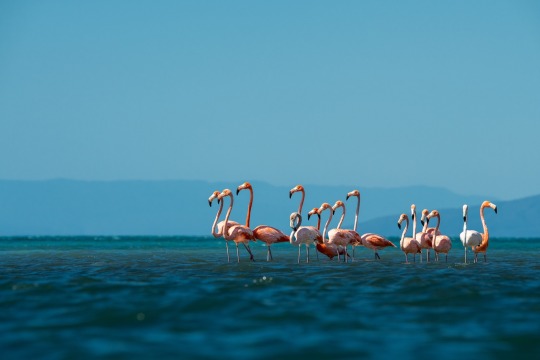
A wild flamingo population gathers on Los Corbanitos beach in Sabana Buey, a town in the Dominican Republic. The birds are not threatened, though anecdotal evidence suggest their numbers are declining in the country. Photographs ByFernando Faciole
‘Selfie’ Flamingos In Caribbean Resorts Are Being Returned To The Wild
Up to a hundred Caribbean flamingos live in resorts, where they form a backdrop of tourists’ social media posts. Now, bird lovers are stepping in to remove them.
— ByJessica Taylor Price | March 06, 2024
At several resorts in Punta Cana, Dominican Republic, flamingos wander the grounds, wading through artificial ponds and foraging any bits of food dropped by tourists.
Visitors post photos and videos of themselves getting close to the birds on social media, attracted to the exoticism of the pink, leggy animals against the backdrop of a tropical beach vacation.
But behind the charming social media posts, things are less rosy for the flamingos.

Top: In the town of Monte Cristi, a mural by artist Kilia Llano highlights the issue of flamingos being captured from the wild. Bottom: Three flamingos walk through a resort in the Bávaro region. Tourists often feed the birds and take photos with them, especially around the pool.
Though the International Union for Conservation of Nature lists the Caribbean—also known as the American—flamingo as “of least concern,” anecdotal evidence suggests the population is declining on the Caribbean island, says Maria Milagros Paulino, director of the Dominican nonprofit Grupo Accion Ecologica.
“When you see flamingos, you see them in groups, so it gives the appearance that they are numerous,” Paulino says through a translator.

Map
The phenomenon of flamingos living at resorts had been trending upward for years, especially in the Bávaro region of Punta Cana, says Eladio Fernandez, a Dominican conservationist and photographer. In 2020, he conducted an informal census of how many birds lived in Bávaro resorts by scrolling through TripAdvisor photos. It’s not known exactly how the flamingos arrived at the various resorts and who is involved in bringing the birds there.
According to Fernandez, personnel from the hotels themselves don’t know where the flamingos came from, in some cases they’ve been there a long time and personnel rotate in and out.
In 2020, he counted 163 flamingos in 41 hotels. Anywhere between a thousand and 3,000 Caribbean Flamingos live in the Dominican Republic. Since those birds don’t breed, they’re not replenishing the population, Fernandez says.
So, in collaboration with the Ministry of Environment and Natural Resources, the National Zoo in Santo Domingo, and Grupo Accion Ecologica, he spent three years coordinating and fundraising to launch a nonprofit called Rescate Rosado, which translates to “pink rescue” in Spanish.
Ministry employees pick up the flamingos, then transfer them to Rescate Rosado and zoo employees, who eventually release them back into the wild, Fernandez says. So far, the nonprofit has removed 66 birds from resorts in the Dominican Republic—and they say they’re just getting started.
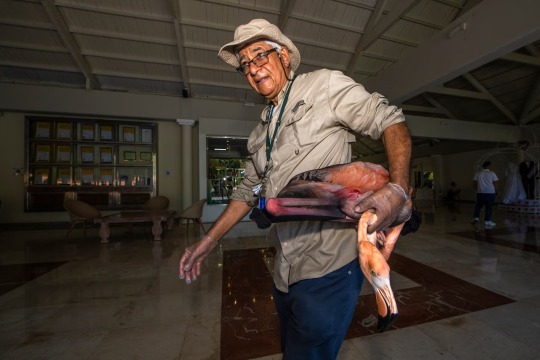
Nelson García Marcano, the Dominican Republic's director of the Department of Biodiversity and Wildlife of the Ministry of Environment, removes a flamingo from a Bávaro resort. This animal is part of the Rescate Rosado's first-ever rescue.
Because of the efforts to remove the flamingos, there should be fewer than a hundred living at Bávaro resorts—but it’s difficult to know for sure, Fernandez says.
Death Traps
On the other side of the country, at Monte Cristi National Park, the pristine resort environment is nowhere to be found. Instead, there are salty lagoons and muddy mangrove swamps accessible only by motorcycle.
This is the natural habitat for Caribbean flamingos; it's also a popular trapping site. And it is here that Paulino, a collaborator with Rescate Rosado, works to remove the traps, which are made of wooden stakes attached to two lassos of fishing wire.
Paulino's group first noticed the traps in 2009 and has been reporting them to the authorities ever since, but the practice hasn’t stopped, and is expected to pick up again this winter and spring, Fernandez says. Once, Paulino says, she spotted a trapper carrying nine flamingos in a bag. On a trip early in 2023, Grupo Ecologico took 706 traps from three locations.
The crude method of trapping can also harm, or even kill, the birds, which Fernandez has seen firsthand in the field. A flamingo could be walking around and "all of a sudden their leg falls in the lasso and when they pull, they're caught," says Fernandez. They could be trapped by a knee or an ankle, and struggle to break free, which exhausts them, especially as the water bogs down their wings.

Top: A rescued flamingo, one of many whose feathers have been clipped to prevent escape from hotels and resorts, enters rehabilitation at the National Zoological Park of the Dominican Republic. Bottom: Trappers use a crude system of wooden stakes attached to fishing wire to ensnare the birds.
The trappers, meanwhile, might not come back for days, leaving the birds—or any other animals caught in the device—in a precarious position. "It's a death trap for the flamingo if they don't get pulled out soon," Fernandez says.
The first time Fernandez went to Monte Cristi National Park to look for traps with Paulino, they found a dead flamingo still in a trap. It had likely been there for months.
Birds In Trouble
"Some [resort flamingos] are well taken care of, and others aren't," Fernandez says.
Some of these flamingos have their secondary feathers cut, which thwarts flight, as Fernandez has observed. Others have a bone surgically removed from their wings, he says. This grounds the bird for life, which can be up to 60 years, says Fernandez. It is not known who cuts the feathers or removes the bones.

Flamingos await release at Monte Cristi National Park.
Several resorts housing flamingos declined to be interviewed for this article.
Fernandez has also witnessed flamingos being given pet food, which eventually fades the vibrant pink color that comes from eating their native diet of shrimp and other small crustaceans. The birds change behaviorally as well, becoming used to people and soliciting them for food, as Fernandez has seen.
But there's at least one trait the flamingos perhaps haven’t lost. Fernandez has seen one instance in which flamingos, which form tight social bonds, stayed by the side of a captive wing-clipped companion.
Two former flamingo hunters are working with the project, sharing their knowledge of trapping. And people are calling out influencers on social media who post photos of the resort flamingos.
On a bigger scale, Fernandez will participate in a formal flamingo census in 2024, which he hopes may lead to the species being listed as endangered in the Dominican Republic.
"This is something we can fix. We can right a wrong," Fernandez said.

An aerial view shows the lagoon where the flamingos will be released in Monte Cristi National Park.

A member of the National Zoo carefully holds a Flamingo. All animals need to be massaged so that blood circulates properly to their feet.
An Emotional Release
In February 2023, guests watched as eight flamingos were removed from a Bávaro resort that cooperated with the rescue. The birds, wrapped in pantyhose to keep them immobilized, were transported in a pickup truck to the national zoo, where they were examined.
The conditions of the birds varied, says Tatiana Carreño Pinto, a zoo veterinarian. Some were underweight, whereas some are too heavy to fly, but all were generally healthy.
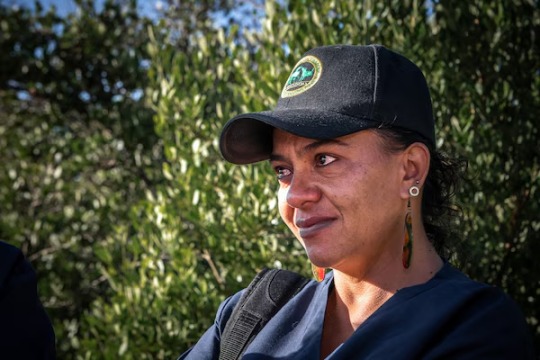
Tatiana Carreño, a Veterinarian at the National Zoo of the Dominican Republic, is moved and cries when she sees the newly released flamingos flying.
Once vets examine the birds, they’re put in an isolated corral for two to three months, and, in this controlled setting, deliberately frightened to regain their natural fear of people.
One morning later that month, scientists loaded 12 flamingos into a truck and drove them to Monte Cristi National Park. Once there, veterinarians massaged their legs to promote circulation.
Then, a boat transported the birds to the lagoon, where another corral awaited them under black mangrove trees. They opened their wings and walked in the confined space, where the flamingos would adjust to their new environment.
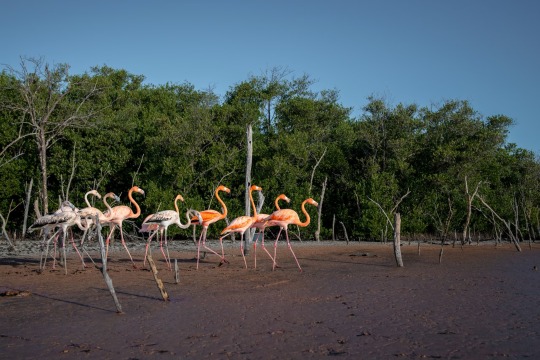
The newly released animals explore their new home.
The next morning, it was go time. The 12 flamingos, seven of which were from resorts, flew or walked away into the lagoon as the rescue team watched, Fernandez says.
"It was very emotional," Pinto says in Spanish. "It was inevitable to cry.”
#Animal Rescue#Greater Flamingo 🦩🦩🦩#Animal Rehabilitation#Tourism#Luxury Travel 🧭 🧳#Animal 🦔 🦓 🦒 Welfare#Caribbean Resorts#Punta Cana | Dominican Republic 🇩🇴#Bávaro Resort#Tatiana Carreño Pinto | Zoo Veterinarian#Monte Cristi National Park 🏞️#Nelson García Marcano#Punta Cana#Eladio Fernandez | Dominican Republic 🇩🇴 | Conservationist | Photographer#Caribbean Flamingos 🦩🦩🦩#Ministry of Environment & Natural Resources | The National Zoo | Santo Domingo | Grupo Accion Ecologica#Rescate Rosado
0 notes
Text

Sony A7C with Tamron 150-500 f/5-6.7. - Barred Owl at Back to the Wild Rehab, Castalia, Ohio. September 2023.
0 notes
Text
Does anyone know anything about how to care for a corvid????
0 notes
Text
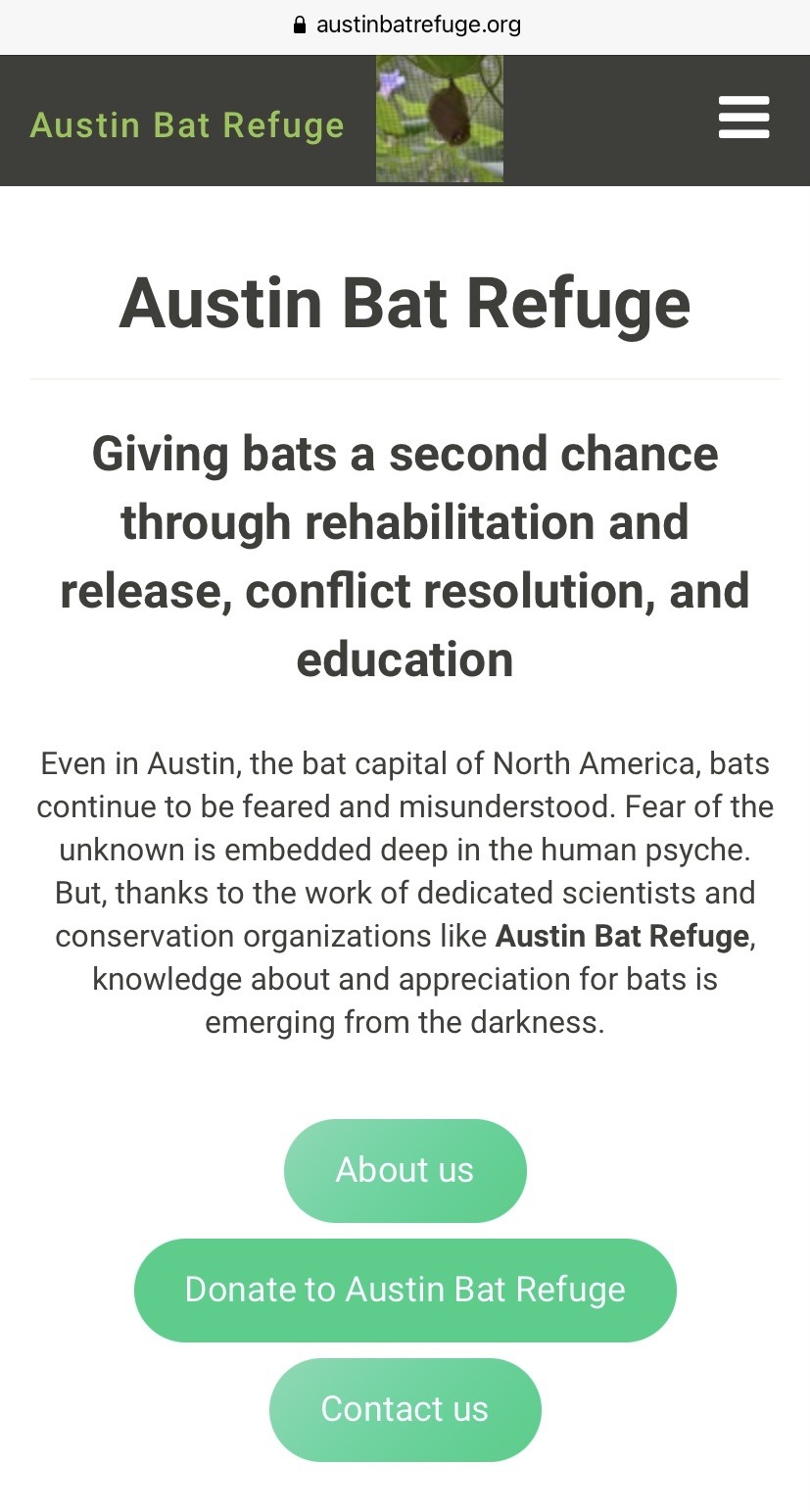
Here’s my personal recommendation of a organization to support:
https://austinbatrefuge.org
#animal rescue#animal rehabilitation#animal lover#animal love#tumblr recommendations#recommend#recommendation#animal rights#spreading awareness#bats#i love bats#cute bats#animal rehab#personal recommendation#make a difference#make a change#wholesome#enviromental#save the environment#ecofriendly
0 notes